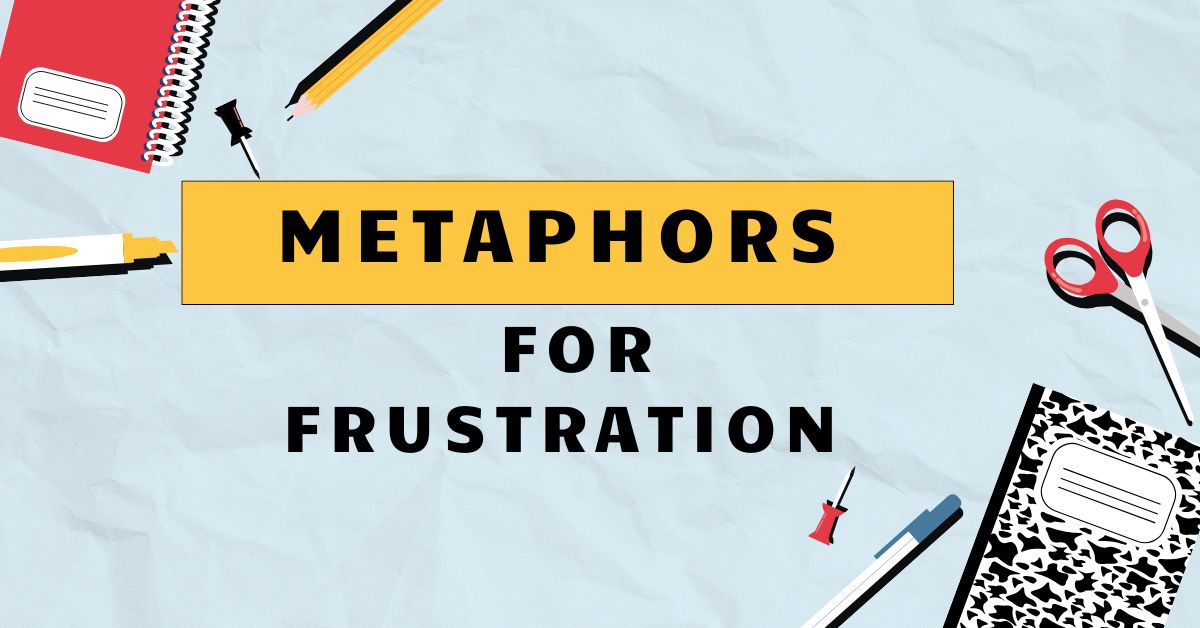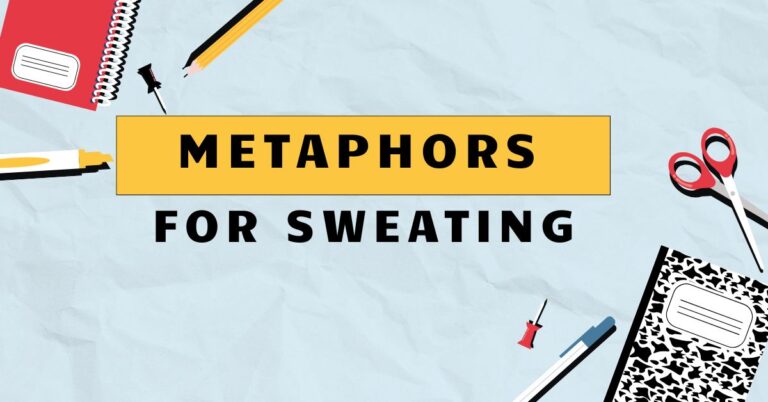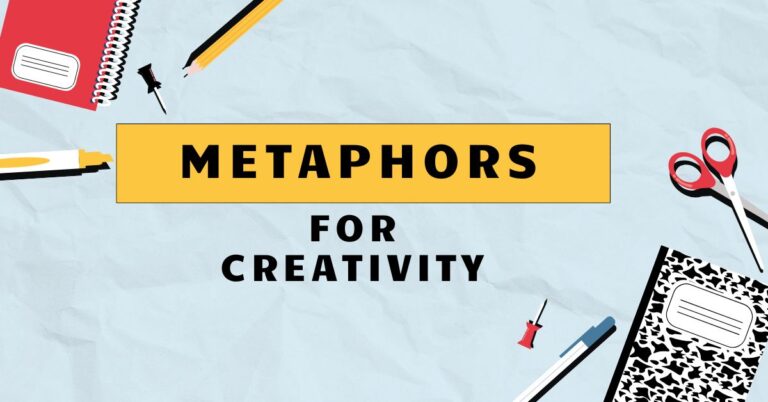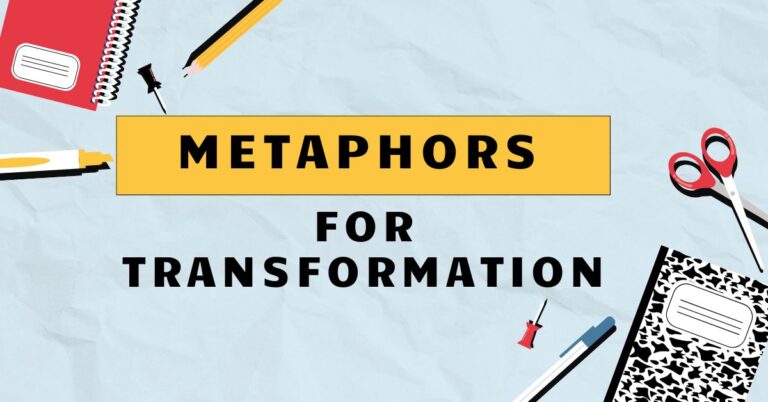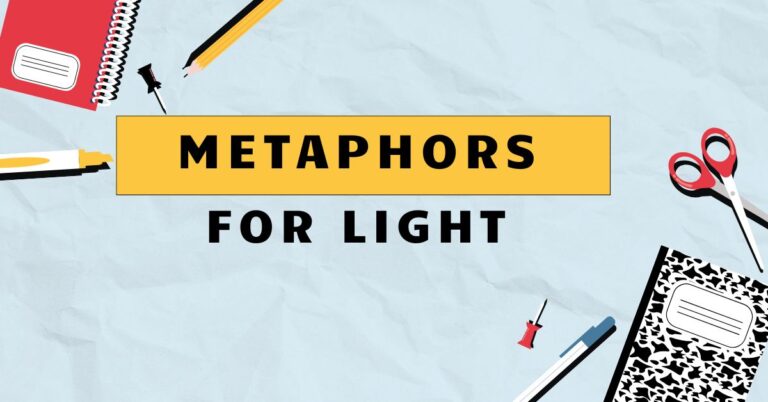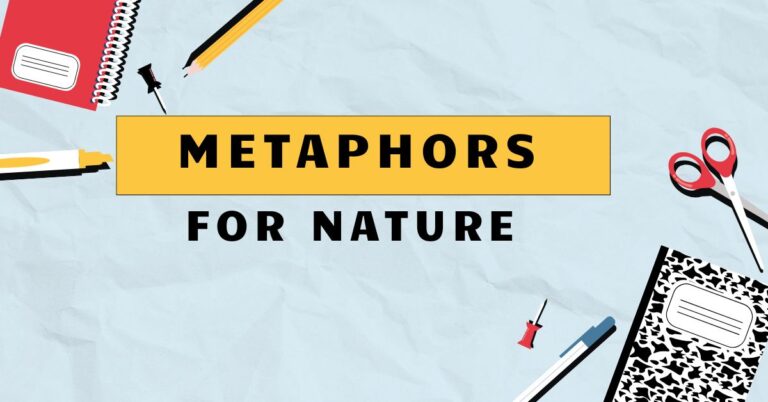37 Metaphors for Frustration: Expressing Annoyance Creatively
Understanding metaphors for frustration is crucial for anyone seeking to enhance their expressive capabilities in English. Metaphors allow us to articulate complex emotions like frustration in vivid and relatable ways.
This article will delve into the definition, structure, types, and usage of frustration metaphors, providing you with the tools to not only recognize them but also to use them effectively in your own communication. Whether you’re an English language learner, a writer looking to add depth to your prose, or simply someone who wants to better understand the nuances of the English language, this guide will offer valuable insights and practical exercises to master this important aspect of metaphorical language.
By exploring the common metaphors used to describe frustration, we gain a deeper understanding of how language shapes our perception of emotions. This knowledge can lead to more articulate and empathetic communication.
This article aims to cover all aspects of metaphors for frustration, including common mistakes and advanced usage, making it a comprehensive resource for anyone interested in mastering this aspect of English.
Table of Contents
- Definition of Metaphors for Frustration
- Structural Breakdown of Frustration Metaphors
- Types and Categories of Frustration Metaphors
- Examples of Metaphors for Frustration
- Usage Rules for Frustration Metaphors
- Common Mistakes When Using Frustration Metaphors
- Practice Exercises
- Advanced Topics in Frustration Metaphors
- Frequently Asked Questions
- Conclusion
Definition of Metaphors for Frustration
A metaphor for frustration is a figure of speech that describes a feeling of annoyance, irritation, or discouragement by comparing it to something else that shares similar characteristics. Unlike similes, which use “like” or “as” to make a comparison, metaphors directly equate frustration to another concept, creating a more vivid and impactful image.
The function of these metaphors is to make abstract feelings more tangible and relatable, allowing both the speaker and the listener to better understand the intensity and nature of the frustration being experienced.
Metaphors for frustration can be classified based on the domain from which they draw their imagery. For instance, some metaphors might use physical sensations (e.g., “a knot in my stomach”), while others might draw on concepts of obstruction or blockage (e.g., “hitting a brick wall”).
The context in which these metaphors are used is crucial; the same metaphor can evoke different meanings depending on the situation and the relationship between the speaker and the listener. Effective use of these metaphors can add depth and nuance to communication, making it more engaging and emotionally resonant.
Structural Breakdown of Frustration Metaphors
The structure of a frustration metaphor typically involves two key elements: thetenorand thevehicle. The tenor is the subject being described (in this case, frustration), and the vehicle is the object or concept to which it is being compared.
The connection between the tenor and the vehicle is based on shared characteristics or associations.
Consider the metaphor, “Frustration is a heavy weight on my shoulders.” Here, the tenor is “frustration,” and the vehicle is “a heavy weight.” The shared characteristic is the sense of burden and pressure. The effectiveness of the metaphor lies in the listener’s ability to understand the connection between these two elements.
The underlying pattern often follows a simple equation:Frustration = X, where X is the vehicle. However, the power of the metaphor lies in the connotations and associations that the vehicle brings to the understanding of frustration.
The key is to choose a vehicle that accurately and effectively conveys the specific nuances of the frustration being experienced. A poorly chosen vehicle can lead to confusion or misinterpretation.
Types and Categories of Frustration Metaphors
Frustration metaphors can be categorized based on the conceptual domains they draw from. Here are some common categories:
Frustration as a Physical Burden
These metaphors equate frustration to a physical weight or load. They emphasize the feeling of being weighed down or burdened by the source of frustration.
Frustration as Containment
These metaphors describe frustration as being trapped or confined. They highlight the feeling of being unable to escape the situation causing frustration.
Frustration as an Obstacle
These metaphors portray frustration as a barrier or impediment. They emphasize the feeling of being blocked or hindered from achieving a goal.
Frustration as Pressure
These metaphors describe frustration as a force pushing down or squeezing. They highlight the feeling of being overwhelmed or stressed by the source of frustration.
Frustration as Sensory Overload
These metaphors equate frustration to an overwhelming sensory experience. They emphasize the feeling of being bombarded or overwhelmed by the source of frustration.
Examples of Metaphors for Frustration
Here are several examples of metaphors for frustration, categorized for clarity:
Table 1: Frustration as a Physical Burden
This table illustrates how frustration can be expressed as a physical burden, emphasizing the feeling of being weighed down.
| Metaphor | Explanation |
|---|---|
| Frustration is a heavy weight on my shoulders. | The feeling of responsibility and stress is overwhelming. |
| I’m carrying the burden of their incompetence. | Feeling responsible for others’ failures is causing frustration. |
| The situation is a millstone around my neck. | The problem is a constant and heavy burden. |
| I feel like I’m dragging a lead weight. | Progress is slow and exhausting due to frustration. |
| The project has become an albatross around my neck. | A constant reminder of failure or difficulty. |
| This problem is a ton of bricks. | The issue is overwhelming and difficult to handle. |
| It’s like having the world on my shoulders. | The responsibility feels immense and crushing. |
| His constant complaining is a drag. | The complaining is weighing me down and making things difficult. |
| The red tape is a heavy chain. | Bureaucracy and rules are holding me back. |
| Her negativity is a dark cloud. | Her attitude is making the situation feel heavy and depressing. |
| The deadline is a looming shadow. | The approaching deadline is causing anxiety and pressure. |
| It’s like wading through mud. | Progress is slow and difficult. |
| The task is a mountain to climb. | The task feels overwhelming and challenging. |
| Their demands are an anchor holding me back. | Their expectations are preventing progress. |
| This paperwork is a ball and chain. | The paperwork is restrictive and burdensome. |
| The responsibility is a yoke around my neck. | The obligation is restrictive and oppressive. |
| It feels like I’m carrying a sack of rocks. | The frustration is a constant, heavy burden. |
| The problem is a heavy load. | The issue is significant and difficult to manage. |
| I’m carrying this team. | I’m doing all the work and it’s frustrating. |
| The project is a burden. | The project is weighing me down. |
| His anger is a weight. | His mood is affecting me. |
| Her sadness is a burden. | Her mood is affecting me. |
Table 2: Frustration as Containment
This table provides examples of how frustration can feel like being trapped or confined, limiting freedom and progress.
| Metaphor | Explanation |
|---|---|
| I feel trapped in this situation. | Unable to escape the source of frustration. |
| I’m stuck in a rut. | Repetitive and unfulfilling routine. |
| I’m in a dead-end job. | No opportunities for advancement or growth. |
| This is a cage. | Feeling confined and restricted. |
| I’m in a box. | Limited by current circumstances or expectations. |
| I’m in a corner. | Feeling pressured and without options. |
| I’m drowning in paperwork. | Overwhelmed by administrative tasks. |
| I’m buried under deadlines. | Stressed by numerous approaching deadlines. |
| I’m chained to my desk. | Unable to leave due to workload. |
| I’m trapped in this nightmare. | Feeling stuck in a bad situation. |
| I’m in a pressure cooker. | High-stress environment with increasing pressure. |
| I’m in a vise. | Feeling squeezed and restricted. |
| My hands are tied. | Unable to act due to restrictions. |
| I’m in a maze. | Confused and lost in a complex situation. |
| I’m stuck in quicksand. | Difficult to make progress. |
| I’m in a whirlpool. | Feeling overwhelmed and out of control. |
| I’m in a tunnel. | Feeling limited vision and options. |
| I’m in a bind. | Facing a difficult situation with limited choices. |
| I’m in a straitjacket. | Feeling constrained and unable to move freely. |
| I’m in a hole. | Feeling stuck in a difficult situation. |
| This feels like a trap. | The situation feels like I’m stuck. |
| He’s in a bubble. | He’s isolated and detached. |
Table 3: Frustration as an Obstacle
This table lists metaphors that represent frustration as a barrier or obstruction, hindering progress and success.
| Metaphor | Explanation |
|---|---|
| I’m hitting a brick wall. | Facing an insurmountable obstacle. |
| This is a roadblock. | An obstacle preventing progress. |
| I’m running into a dead end. | Reaching a point where no further progress is possible. |
| I’m facing a mountain of paperwork. | Overwhelmed by the amount of administrative tasks. |
| I’m up against a wall. | Facing a difficult challenge. |
| There’s a snag in the project. | An unexpected problem is hindering progress. |
| I’m navigating a minefield. | Dealing with a situation full of potential problems. |
| We’re stuck in the weeds. | Lost in details and unable to see the bigger picture. |
| I’m facing an uphill battle. | Dealing with a difficult challenge. |
| There’s a hurdle to overcome. | Facing an obstacle that needs to be addressed. |
| I’m fighting an uphill battle. | Struggling against difficult odds. |
| It’s like banging my head against a wall. | Repeatedly trying something without success. |
| This is a stumbling block. | An obstacle that causes a temporary setback. |
| I’m swimming against the tide. | Going against the prevailing trend or opinion. |
| There’s a clog in the system. | An obstruction preventing smooth operation. |
| I’m stuck in the mud. | Unable to make progress. |
| This is a bottleneck. | A point of congestion slowing down progress. |
| I’m hitting a snag. | Encountering an unexpected problem. |
| This is a hurdle. | An obstacle that needs to be overcome. |
| The system is a maze. | The system is difficult to navigate. |
| The rules are a maze. | The rules are difficult to navigate. |
| The bureaucracy is a barrier. | The bureaucracy is difficult to navigate. |
Table 4: Frustration as Pressure
The following metaphors describe frustration as a form of pressure, highlighting feelings of stress and being overwhelmed.
| Metaphor | Explanation |
|---|---|
| I’m under pressure to deliver. | Feeling pressured to meet expectations. |
| I’m feeling the squeeze. | Experiencing financial or emotional strain. |
| I’m under the gun. | Facing intense pressure or scrutiny. |
| I’m feeling the heat. | Experiencing intense pressure or scrutiny. |
| I’m on edge. | Feeling anxious and tense. |
| I’m stretched thin. | Having too many responsibilities and not enough time. |
| I’m at my wit’s end. | Feeling unable to cope with the situation. |
| I’m burning the candle at both ends. | Working excessively and risking burnout. |
| I’m at the end of my rope. | Feeling like I can no longer cope with the situation. |
| I’m at my breaking point. | Reaching the limit of my endurance. |
| I’m feeling squeezed. | Experiencing pressure from multiple sources. |
| I’m under a microscope. | Being closely scrutinized. |
| I’m walking on eggshells. | Being cautious to avoid causing offense or problems. |
| I’m walking a tightrope. | Navigating a delicate situation with care. |
| I’m at the boiling point. | Reaching a point of extreme frustration. |
| I’m bottled up. | Suppressing emotions and feeling tense. |
| I’m in a pressure cooker. | Experiencing a high-stress environment. |
| I’m on a short fuse. | Easily angered or frustrated. |
| I’m losing my grip. | Feeling like I’m losing control. |
| I’m losing it. | Becoming overwhelmed and emotional. |
| I’m losing my mind. | Becaming overwhelmed and emotional. |
| This is a breaking point. | The situation has reached its limit. |
Table 5: Frustration as Sensory Overload
The table below contains metaphors that describe frustration as an overwhelming sensory experience, leading to feelings of being bombarded and overloaded.
| Metaphor | Explanation |
|---|---|
| I’m bombarded with information. | Overwhelmed by the amount of data. |
| It’s a cacophony of noise. | Overwhelmed by the chaotic sounds. |
| I’m swimming in data. | Overwhelmed by the amount of information. |
| It’s a sensory overload. | Overwhelmed by the intensity of sensory input. |
| I’m drowning in details. | Overwhelmed by the minute aspects of a task. |
| It’s a storm of emotions. | Overwhelmed by the intensity of feelings. |
| I’m in a fog. | Feeling confused and disoriented. |
| I’m in a haze. | Feeling confused and disoriented. |
| It’s a whirlwind of activity. | Overwhelmed by the pace and intensity of the situation. |
| I’m in a blur. | Feeling overwhelmed by the speed of events. |
| It’s a circus. | The situation is chaotic and disorganized. |
| It’s a madhouse. | The situation is chaotic and disorganized. |
| It’s a zoo. | The situation is chaotic and disorganized. |
| It’s a mess. | The situation is chaotic and disorganized. |
| It’s a jungle. | The situation is chaotic and competitive. |
| I’m blinded by the light. | Overwhelmed by the intensity of the situation. |
| I’m deafened by the noise. | Overwhelmed by the chaos. |
| I’m saturated with information. | The situation is overwhelming. |
| I’m numb. | I’m overwhelmed. |
| I’m losing my senses. | The situation is overwhelming. |
| This is a sensory overload. | The situation is overwhelming. |
| It’s a whirlwind. | The situation is overwhelming. |
Usage Rules for Frustration Metaphors
When using metaphors for frustration, it’s important to adhere to certain rules to ensure clarity and effectiveness:
- Choose relevant vehicles: The vehicle should have a clear connection to the feeling of frustration. The more relevant the vehicle, the more effective the metaphor will be.
- Avoid mixed metaphors: Mixing unrelated metaphors can create confusion and weaken the impact. For example, “I’m hitting a brick wall while drowning in paperwork” combines two distinct images that don’t blend well.
- Consider your audience: Ensure that your audience will understand the metaphor. Cultural references or highly specific imagery may not resonate with everyone.
- Use sparingly: Overusing metaphors can diminish their impact. Use them strategically to emphasize key points and add color to your language.
- Maintain consistency: Once you establish a metaphor, maintain consistency throughout your communication. Shifting metaphors mid-sentence can confuse the listener.
Common Mistakes When Using Frustration Metaphors
Here are some common mistakes to avoid when using metaphors for frustration:
- Using clichéd metaphors: Overused metaphors like “a pain in the neck” can sound unoriginal and lack impact.
- Creating mixed metaphors: Combining unrelated images can create confusion.
- Choosing inappropriate vehicles: The vehicle should accurately reflect the nuance of the frustration.
- Overusing metaphors: Too many metaphors can make your communication sound forced or unnatural.
Table 6: Correct vs. Incorrect Metaphor Usage
This table illustrates correct and incorrect uses of metaphors, highlighting the importance of clarity and relevance.
| Incorrect | Correct | Explanation |
|---|---|---|
| “I’m climbing a brick wall.” | “I’m hitting a brick wall.” | “Hitting” implies an obstacle, while “climbing” suggests progress. |
| “Frustration is a sweet melody.” | “Frustration is a discordant note.” | “Discordant note” conveys the unpleasantness of frustration. |
| “I’m drowning in a sea of mountains.” | “I’m drowning in a sea of paperwork.” | The corrected version uses a relevant image to convey being overwhelmed. |
| “The project is a walk in the park, but I’m hitting a brick wall.” | “The project is an uphill battle; I’m hitting a brick wall.” | The corrected version provides a consistent level of difficulty. |
Practice Exercises
Test your understanding of metaphors for frustration with these exercises:
Exercise 1: Identifying Metaphors
Identify the metaphor for frustration in each sentence.
- The bureaucracy is a tangled web.
- I’m at the end of my rope with this project.
- His negativity is a dark cloud over the team.
- I feel like I’m banging my head against a wall.
- The constant interruptions are a thorn in my side.
- This problem is a real headache.
- I’m carrying the weight of the world on my shoulders.
- The situation is a minefield of potential problems.
- I’m drowning in a sea of emails.
- This task is a mountain to climb.
Exercise 2: Completing Metaphors
Complete the following metaphors with an appropriate vehicle.
- Frustration is like __________.
- This project is a __________.
- I feel like I’m trapped in a __________.
- The deadline is a __________.
- The problem is a __________.
- This situation is a __________.
- My patience is a __________.
- The red tape is a __________.
- The challenge is a __________.
- The workload is a __________.
Exercise 3: Rewriting Sentences
Rewrite the following sentences using a metaphor for frustration.
- I am very stressed about this deadline.
- I am finding it difficult to make progress on this project.
- I am overwhelmed by the amount of work I have to do.
- I am annoyed by the constant interruptions.
- I am tired of dealing with this problem.
- I am feeling trapped in this situation.
- I am struggling to overcome this obstacle.
- I am reaching my limit of patience.
- I am feeling the pressure to succeed.
- I am confused by the complex rules.
Table 7: Answer Key for Practice Exercises
This table provides the answers to the practice exercises, allowing you to check your understanding and improve your skills.
| Exercise | Answer |
|---|---|
| Exercise 1 | 1. tangled web, 2. end of my rope, 3. dark cloud, 4. banging my head against a wall, 5. thorn in my side, 6. headache, 7. weight of the world, 8. minefield, 9. sea of emails, 10. mountain to climb |
| Exercise 2 | (Example answers) 1. a storm, 2. a burden, 3. a cage, 4. a looming shadow, 5. a roadblock, 6. a pressure cooker, 7. a ticking bomb, 8. a heavy chain, 9. a mountain, 10. a flood |
| Exercise 3 | (Example answers) 1. This deadline is a noose around my neck., 2. I’m wading through mud on this project., 3. I’m drowning in work., 4. The interruptions are a constant buzzing in my ear., 5. This problem is a never-ending nightmare., 6. I’m trapped in a maze., 7. This obstacle is a brick wall., 8. My patience is running on fumes., 9. The pressure to succeed is crushing me., 10. The rules are a tangled web. |
Advanced Topics in Frustration Metaphors
For advanced learners, exploring the cultural and contextual nuances of frustration metaphors can add depth to their understanding. Different cultures may use different metaphors to express frustration, reflecting their unique values and experiences.
For example, a culture that values harmony may use metaphors that emphasize the disruption of balance, while a culture that values individualism may use metaphors that emphasize the restriction of personal freedom.
Furthermore, the effectiveness of a metaphor can depend on the specific context in which it is used. A metaphor that is appropriate in a casual conversation may not be suitable in a formal presentation.
Understanding these nuances requires a deep understanding of both the language and the culture in which it is used. Analyzing literary works and real-world communication can provide valuable insights into the subtle ways in which metaphors for frustration are used.
Another advanced topic is the creation of original metaphors. While it’s important to be familiar with common metaphors, crafting your own can add a unique voice to your communication.
This requires a keen awareness of language and a creative ability to find new and compelling ways to describe complex emotions. Experimenting with different vehicles and considering the connotations they evoke can lead to the creation of powerful and memorable metaphors.
Frequently Asked Questions
- What is the difference between a metaphor and a simile?
A metaphor directly equates two things, while a simile uses “like” or “as” to make a comparison. For example, “Frustration is a weight” (metaphor) versus “Frustration is like a weight” (simile).
- Why are metaphors important in communication?
Metaphors make abstract concepts more concrete and relatable, enhancing understanding and engagement. They add depth, color, and emotional resonance to language.
- How can I improve my use of metaphors?
Read widely, pay attention to how others use metaphors, and practice creating your own. Be mindful of your audience and the context in which you are communicating.
- What are some common sources of metaphors for frustration?
Physical sensations (e.g., pressure, weight), obstacles (e.g., walls, roadblocks), and containment (e.g., cages, traps) are common sources.
- How can I avoid using clichéd metaphors?
Be creative and look for fresh, original ways to express your ideas. Think about the specific nuances of the frustration you are trying to convey and choose a vehicle that accurately reflects those nuances.
- Is it okay to mix metaphors?
Generally, it’s best to avoid mixing metaphors, as it can create confusion and weaken the impact of your communication. However, in some cases, a carefully crafted mixed metaphor can be effective if it is done intentionally and with skill.
- How do cultural differences affect the use of metaphors?
Different cultures may have different ways of understanding and expressing emotions, which can be reflected in the metaphors they use. Be aware of these differences and tailor your metaphors to your audience.
- What is the role of context in understanding metaphors?
The context in which a metaphor is used can significantly affect its meaning. Consider the situation, the relationship between the speaker and the listener, and the overall tone of the communication.
- How can I identify a metaphor in a sentence?
Look for a statement that equates two unlike things without using “like” or “as.” Ask yourself if the statement is literally true; if not, it’s likely a metaphor.
- Can metaphors be used in formal writing?
Yes, metaphors can be used in formal writing, but they should be used sparingly and with care. Choose metaphors that are appropriate for the audience and the tone of the writing.
Conclusion
Mastering metaphors for frustration is a valuable skill for anyone looking to enhance their communication abilities. By understanding the definition, structure, types, and usage rules of these metaphors, you can add depth, color, and emotional resonance to your language.
Avoid common mistakes, practice regularly, and explore advanced topics to further refine your skills. Remember that the key to effective use of metaphors is to choose relevant vehicles, avoid mixed metaphors, and be mindful of your audience and the context in which you are communicating.
By incorporating metaphors into your vocabulary, you not only enrich your language but also gain a deeper understanding of how emotions are expressed and perceived. This enhanced understanding translates into more empathetic and articulate communication.
Continue to explore and experiment with metaphors, and you’ll find that they become an invaluable tool for expressing the nuances of human experience.

